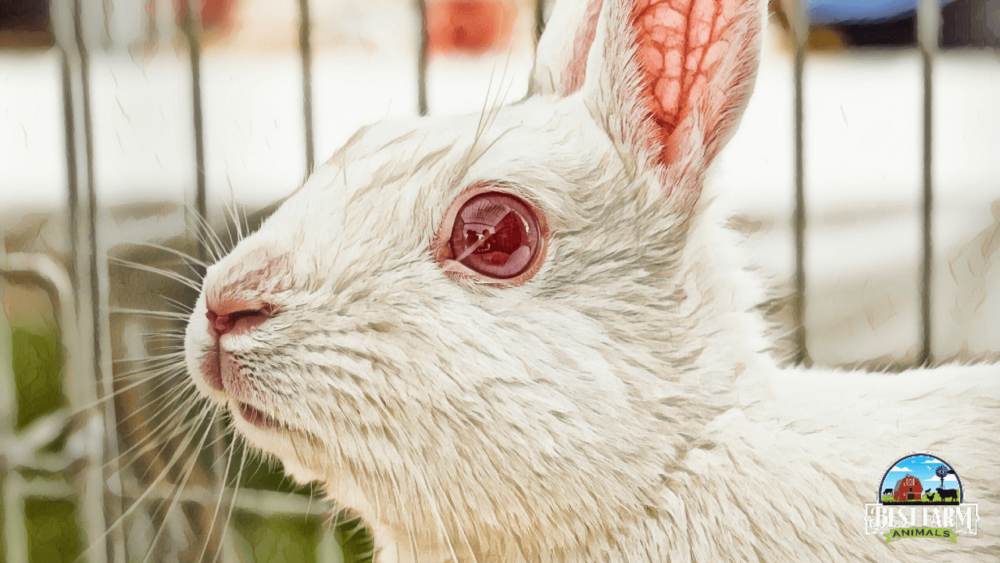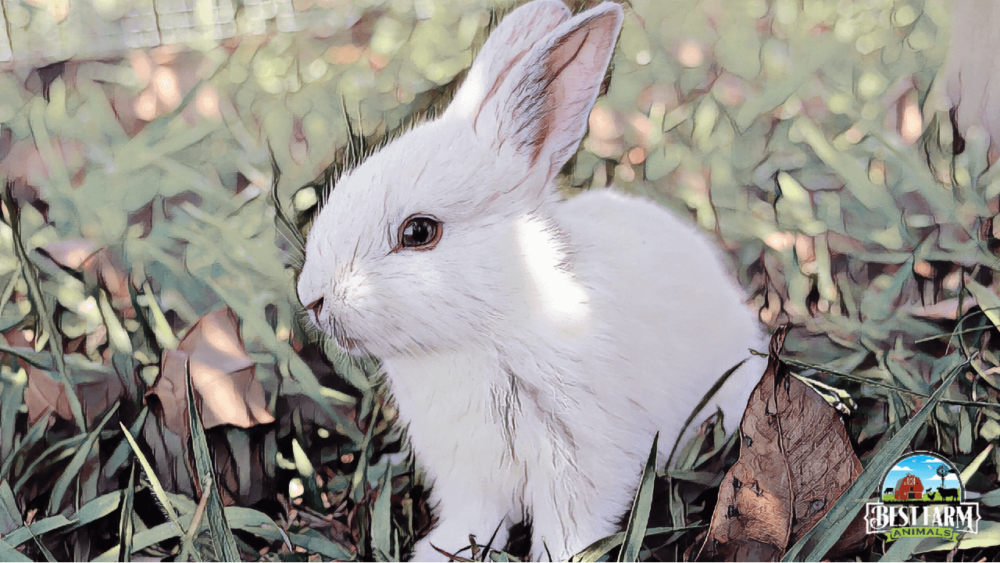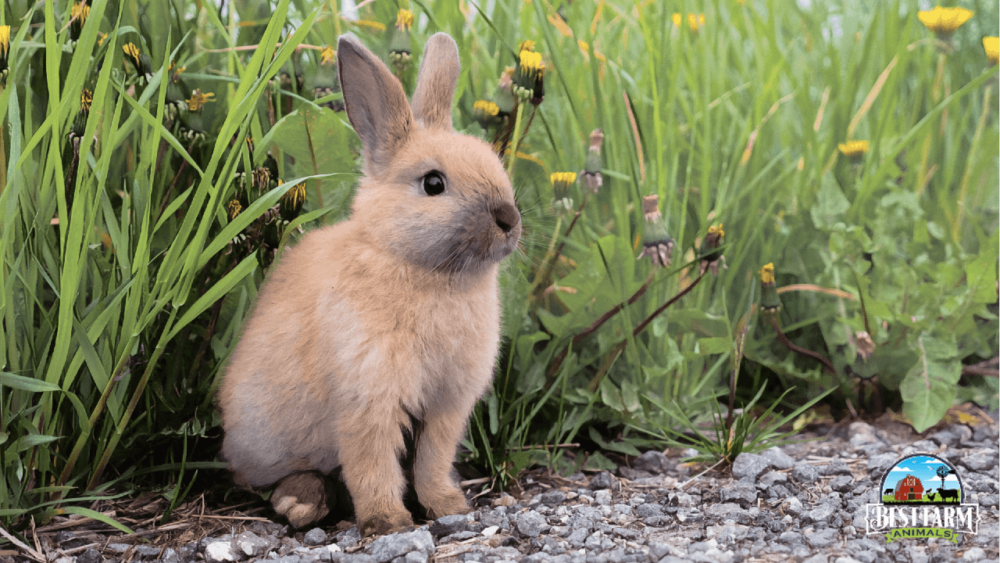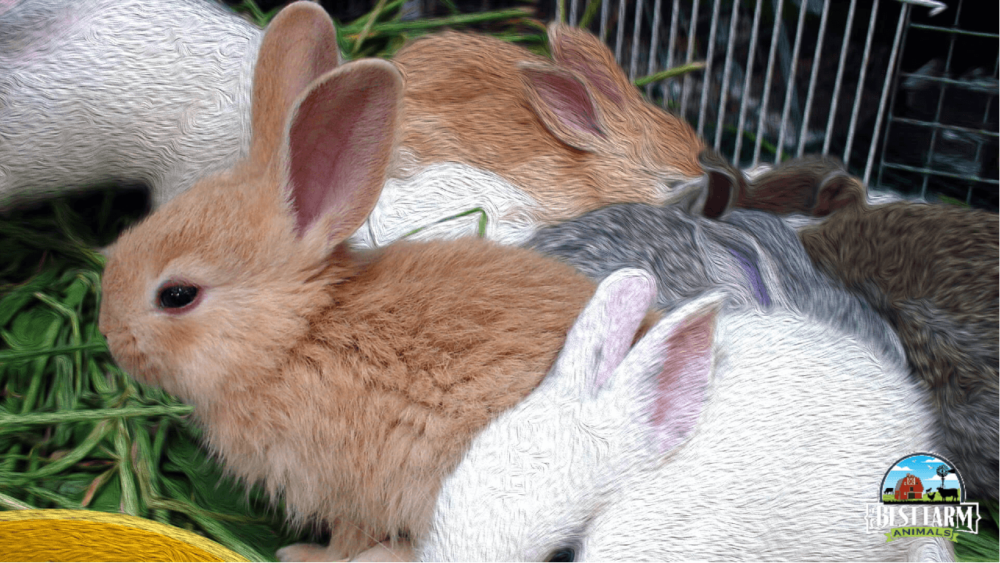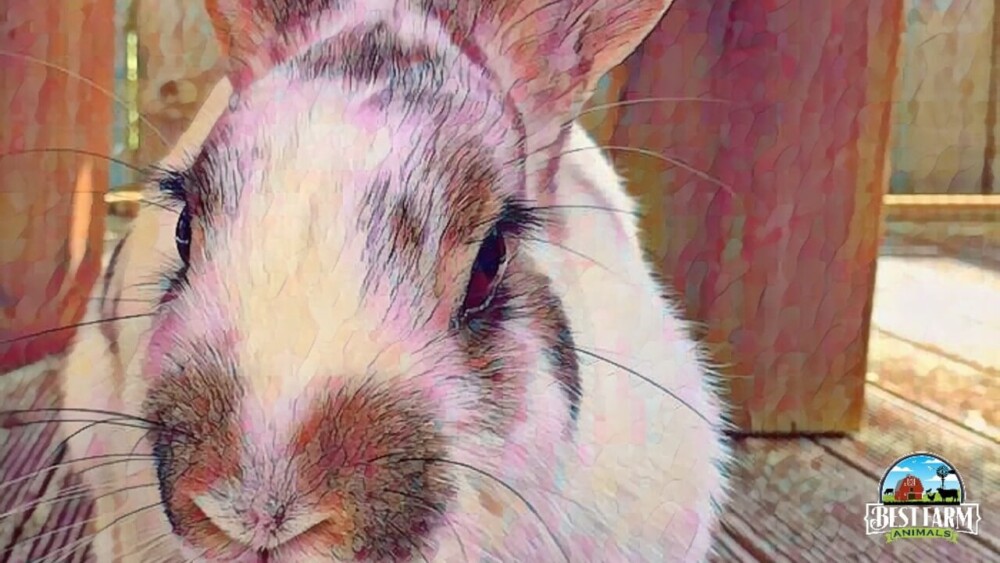The discovery of red, inflamed eyes (also known as ‘red eye’ or hyperemia) in a rabbit may be alarming to many pet owners. Many owners want to know if it’s a severe condition or can be passed to other rabbits. White rabbits can have red eyes related to albinism. An albino rabbit doesn’t have pigment in the skin or fur. This makes the eyes pink or red. Only white rabbits have red eyes due to albinism. If your rabbit has colored fur, another condition is present.
If your rabbit’s eyes are newly red, inflamed, or have a discharge, then it needs treatment.
What are the causes of hyperemia or red-eye? An injury or irritation usually causes a red eye in a rabbit. A bacterial infection can also cause it, damage to the eye or in rare cases, dental infections. The most common type of bacteria, Treponema cuniculi, causes swollen eyelids. Rabbit conjunctivitis is an infection caused by trauma to the eye. Corneal Ulcers are the most common cause of eye disorders and can cause red eye.
This article will cover the causes of red eye in detail.
What should owners do if they notice the red-eye in their rabbit?
Usually, you can treat most of the causes of red-eye, either at home or by a vet. Antibiotics can generally counter infections. If something is stuck in the rabbit’s eye, it should be washed out with a saline rinse or gently removed with a q-tip. However, should the rabbit exhibit fur loss or swelling around its eyes, grinding teeth, or lethargy, immediately take it to the vet. A vet can only diagnose and treat more serious ailments such as abscesses, ulcers, or inflammation due to dental disease.
This article covers the causes, treatment, and prevention of the most common conditions resulting in rabbits presenting red, swollen, and inflamed eyes.
Why are Rabbits Prone to Getting Red, Inflamed Eyes?
The anatomy of rabbits’ eyes is the main reason they are susceptible to hyperemia. The large size and position of the eyes on the sides of their heads mean they are more likely to get things stuck in them, resulting in irritation or infection. It is also more probable objects in the environment injure them. The location of the tear ducts, below the eye and just above the teeth, increases the likelihood of dental issues affecting their eyes.
As your work to help your rabbit heal, you must hold it securely and establish a relationship of trust.
What are the Causes of Red, Inflamed Eyes in Your Rabbit?
Below is a list of the most common illnesses that give rise to hyperemia in rabbits and the recommended treatment in each case.
1. Conjunctivitis, Rabbit Pink Eye
Rabbit conjunctivitis, also called pink eye, is the most common cause of red, inflamed eyes. Rabbits with conjunctivitis will develop watery, or weeping eyes that may develop into crusty eyes. Rabbits may rub their eyes with their paws. Eyes often appear inflamed and red or pink. Their tears may remain clear.
The disease, also known as pink-eye, is most often caused by bacterial or parasitic infection. Conjunctivitis can also be a warning sign for more severe issues like myxomatosis. Conjunctivitis is usually treated with antibiotics.
Due to the uncertainty surrounding the reason for rabbit conjunctivitis development, it is recommended any rabbit exhibiting these symptoms is taken to the vet immediately and subsequently separated from other animals as the disease is highly contagious.
The vet will generally focus on treating the underlying cause of conjunctivitis, which may involve antibiotics, anti-inflammatory medication, or numbing eye drops.
2. Dental Disease: Inflames Rabbit Eyes
Due to the proximity of rabbits’ eyes and teeth, a common cause of inflamed eyes could be a dental infection. In the rabbit’s face, the dental system, nasel and eye ducts are interwoven. When the dental system becomes infected, it spreads quickly to the eyes. As the body fights off the infection, local inflammation may spread to the eyes and cause them to become red, weepy, and watery.
If a rabbit exhibits these symptoms, carefully examine its mouth, teeth, and gums for discolouration, sensitivity, or swelling. Usually, a veterinarian will prescribe antibiotics to treat the infection and extract the tooth in more extreme cases. One way to reduce dental issues is to provide your rabbit with plenty of roughage to chew on.
3. Dacryocystitis: Inflamed Tear Ducts
Red, inflamed eyes accompanied by tear staining, fur loss around the eyes, and white discharge could signify an inflamed tear duct. Dacryocystitis is a secondary illness caused by dental disease, a tear duct blockage, or local infection. Duct flushing can usually treat a simple case. However, it may take more complex measures that are not guaranteed to work if the teeth are involved.
The most effective preventative measure is to provide the rabbit with a high-fibre diet, including grass or hay, to ensure dental health.
4. Keratitis: Eye Infection and Discharge
Keratitis is a fungal eye infection that causes the rim and cornea to become red and inflamed. A discharge and ulceration may accompany it. While both keratitis and conjunctivitis cause red eyes, they look different. By closely examining your rabbit’s eyes, you can tell the difference between keratitis and conjunctivitis. Conjunctivitis manifests as the white of your rabbit’s eyes becoming red and inflamed. Keratitis is when the clear dome covering the iris and pupil becomes red and inflamed.
If diagnosed early on, keratitis is easily treatable by topical antibiotic eyedrops. However, if it progresses unnoticed, the rabbit could require surgery.
5. Foreign Object in the Eye
Something getting stuck in a rabbit’s eye is a prevalent cause of redness and irritation. It is also one of the first causes to rule out when diagnosing hyperemia. The simplest way to examine the eye in natural light is to go about it. Avoid using flashlights or other bright light sources as rabbits have light-sensitive eyes.
If the foreign object is spotted, it should either be rinsed out with saline solution from a sealed bottle (to prevent contamination) or gently removed with a clean cotton swab. If you use a saline solution, ensure the foreign object hasn’t simply disappeared behind the lower eyelid.
The redness and inflammation should clear up soon after this unless the surface of the rabbit’s eye is scratched or damaged, in which case you should take the rabbit to the vet right away.
6. Respiratory Infection That Affects The Eyes
Also known as ‘snuffles,’ an upper respiratory tract infection could cause a rabbit’s eyes to look red and inflamed. The condition is most likely bacterial and concentrated in the sinuses. A rabbit’s sinuses are located close to its eyes, so any infection of the upper respiratory tract affects them as well. Snuffles can occur anytime of the year, not just in the winter.
The best course of action would be to allow a vet to run a Culture and Sensitivity test to identify the exact strain of bacteria causing the infection. Your vet will prescribe antibiotics and the full doses recommended to the rabbit.
7. Allergies
Like humans, rabbits can have allergic reactions to things in their food or environment. In addition to red, inflamed eyes, you may notice sneezing, irritated skin that leads to scratching, and a runny discharge from the nose. Failing to properly rinse bowls or cages can cause a build-up of mites, dust, and bacteria.
If you suspect the rabbit’s symptoms are due to an allergy, the best thing to do is identify the allergen through a process of elimination and remove it from the rabbit’s environment or diet.
8. Corneal Ulcer
Corneal ulcers are caused by something scratching or rubbing against a rabbit’s eye. Symptoms accompanying redness and inflammation are sensitivity to light and the rabbit keeping its eye closed.
A vet can only diagnose corneal ulcers using a fluorescein stain that marks the ulcer in green. If the diagnosis is confirmed, a vet will prescribe a topical antibiotic to prevent infections from developing. Most corneal ulcers heal on their own in less than a week.
9. Abscess Behind the Eye
Another eye condition caused by dental diseases are abscesses, which usually form behind the eye due to food particles reaching the root of a tooth and causing infection. This results in pus pooling behind the eye and causing the eyelid to bulge and the eye to appear red and inflamed.
Abscesses must be drained by a vet who will make a small hole to open it, carefully squeezing out the pus and liquid. A course of antibiotics will follow this to ensure the infection is cleared up.
10. Myxomatosis: Lethal
An often fatal disease that can be prevented by vaccination, myxomatosis is caused by a virus passed on by other rabbits, mosquitoes, or fleas.
Symptoms include sleepy eye, or the eyes, nose, and mouth become swollen. Eyes become red and inflamed, the rabbit may experience breathing problems, lethargy, and swelling around the face and genitals. A white discharge from the rabbit’s eyes is also common. If your rabbit has not been vaccinated against myxomatosis, the chances of recovery are meager. In this case, your vet may recommend euthanasia to prevent further suffering.
It is vital that rabbits are given the myxomatosis vaccine every year and that their environment is kept as insect-free as possible.
11. Glaucoma Eye Disorder (Primarily Found in New Zealand)
Glaucoma is a condition that stems from a recessive trait primarily found in New Zealand rabbits. It is an eye disorder caused by elevated pressure levels in the eye. This pressure affects the nerves in the eyes, causing red, swollen, infected eyes and, in more serious and later on cases, partial to a full loss of sight. Glaucoma is primarily found in New Zealand white rabbits.
How to Prevent Eye Problems in Rabbits
There are many ways you can reduce the chances of your rabbits contracting red eye. These include:
- Avoid using shavings as bedding as the smaller particles can cause eye irritation.
- Provide a high-fibre diet so that teeth are kept in good condition.
- Ensure the rabbit is always up-to-date with its vaccinations.
- Keep the living environment clean and well ventilated to avoid attracting insects.
- Clean any furniture or equipment the rabbit comes in contact with regularly, lowering the chances of transmission of bacteria or parasites.
- Check the rabbit’s paws for clumped fur, indicating it is rubbing discharge out of its eyes.
Frequently Asked Questions
Do Rabbits Have Eyelids? Rabbits have three eyelids. The nictitating eyelid, or the third eyelid, is a clear eyelid that blinks to keep the eye moist. It is clear and allows rabbits to be aware of their surroundings, even while sleeping. Rabbits can sleep with their eyes open. This allows rabbits an almost 360-degree view of the world day or night. The other two eyelids, the top and the bottom, are similar to human eyelids but don’t blink.
Why do white rabbits have red eyes? Albino rabbits have red eyes because they lack pigment in their skin or fur. The red from the blood vessels in the rabbit’s eyes causes the eyes to look red. Albinism is a recessive gene. Only three breeds of rabbits always have red eyes: Himalayan, Californian, and Florida White. Other breeds can produce red eyes, such as Angoras, Flemish Giant, Holland Lop, Britianna Pettite, Jersey Wooly, Polish, Rex, Satin, Netherland Dwarf, New Zealand, and the Lionhead rabbits.
Why does my rabbit have watery eyes? Watery eyes in rabbits is almost always cause for concern. It usually signals issues such as dental issues, eye infections or injuries, irritants in the eye, or tear duct blockages. Weepy eye is most often caused by pink eye or rabbit conjunctivitis, a bacterial infection. Rabbits that experience extremely dusty conditions may also have eye irritation from dust or particles in the eye.
Why do my rabbit’s eyes pop out? If your rabbit’s eye pops out, it is a sign of Exophthalmos, Buphthalmia, or abscesses. Exophthalmosis is caused by swelling or growths, such as lesions, behind the rabbit’s eye that displaces the eyeball. It is often caused by dental-related issues. You need to take immediate care. Buphthalmia is caused by glaucoma, or eye diseases, such as a eye tumor. Occasionally, rabbits may also slightly bulge their eyes out to have a better view. This sub-conscious bulging will not accompany any signs of illness.
Conclusion
Rabbits naturally hide illness as a survival tactic. Predators tend to target weaker rabbits, so concealing signs of pain or injury may be their best means of survival. This makes it very difficult for owners to know when something is wrong. It is, therefore, imperative for rabbit owners to pay special attention to the well-being of their pets.
Most eye problems, especially those causing redness and inflammation, are easily treatable if caught early on. Regular checks of the rabbit’s eyes, paws, and head greatly increase the chances of spotting potential problems before they get serious.
Thus, with some forethought and extra attention to their animals’ living space, diet, and general well-being, rabbit owners can prevent or treat most of the conditions mentioned above at home.
Recommended Rabbit Supplies
This list contains affiliate products. Affiliate products do not cost more but helps to support BestFarmAnimals and our goal to provide farm animal owners with accurate and helpful information.
Housing: If your rabbit is indoor, you’ll need a cage, a hideout (to keep your rabbit from death by heart attack), and a space for it to get exercise and spend time with you. If you don’t want to let it run free in your house, this animal playpen provides space and keeps your rabbit from hiding under your couch.
If you keep your rabbit outdoors, an outdoor hutch that provides space and protection from predators is needed. (I’d still keep mine in a barn for further protection from the elements.)
You’ll also need bedding, toys, a grooming brush, and treats for your little friend. A litter box is important because rabbits can be potty trained. Timothy hay is the best kind of hay for rabbits as alfalfa is too sweet. Don’t forget a water drinker. I like the half-gallon waterer because it can cover two rabbits for several days. Pair it with a food bowl or a food manger (a little cleaner) and you’ll be set up!
If you want to treat your bunny to entertainment, a cat tower, a treat ball, or bunny toys all work wonderfully.
Finally, if you plan on taking your rabbit with you on trips, you’ll need a carrier. Here’s a small carrier or larger carrier that work great for occasional travel. If you travel a lot, you might want the carrier that’s rated #1 in safety for safe travels
Lastly, I use this odor eliminator for accidents and to wipe out the bottom of the cage and litter box when I clean it.

